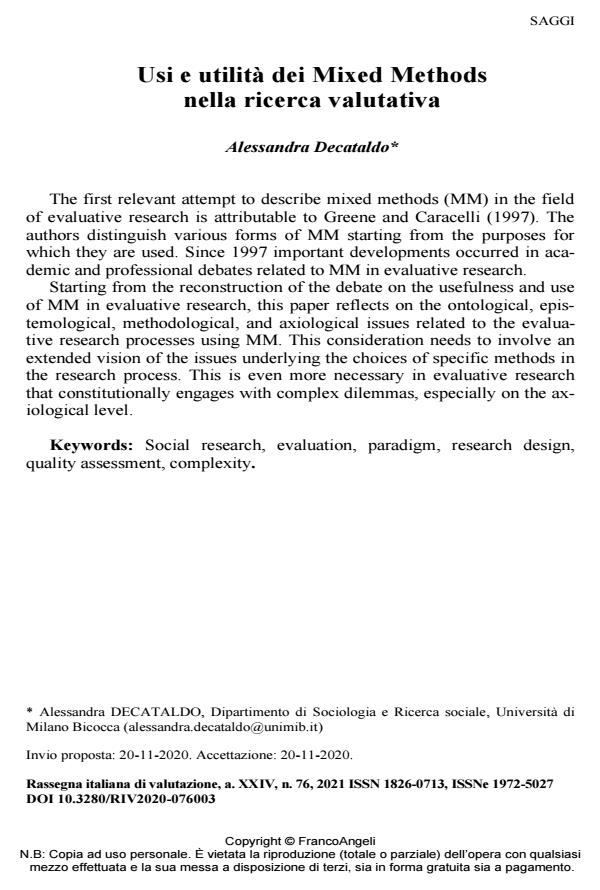Usi e utilità dei Mixed Methods nella ricerca valutativa
Titolo Rivista RIV Rassegna Italiana di Valutazione
Autori/Curatori Alessandra Decataldo
Anno di pubblicazione 2021 Fascicolo 2020/76
Lingua Italiano Numero pagine 20 P. 33-52 Dimensione file 321 KB
DOI 10.3280/RIV2020-076003
Il DOI è il codice a barre della proprietà intellettuale: per saperne di più
clicca qui
Qui sotto puoi vedere in anteprima la prima pagina di questo articolo.
Se questo articolo ti interessa, lo puoi acquistare (e scaricare in formato pdf) seguendo le facili indicazioni per acquistare il download credit. Acquista Download Credits per scaricare questo Articolo in formato PDF

FrancoAngeli è membro della Publishers International Linking Association, Inc (PILA)associazione indipendente e non profit per facilitare (attraverso i servizi tecnologici implementati da CrossRef.org) l’accesso degli studiosi ai contenuti digitali nelle pubblicazioni professionali e scientifiche
The first relevant attempt to describe mixed methods (MM) in the field of evaluative research is attributable to Greene and Caracelli (1997). The authors distinguish various forms of MM starting from the purposes for which they are used. Since 1997 important developments occurred in academic and professional debates related to MM in evalu-ative research. Starting from the reconstruction of the debate on the usefulness and use of MM in evaluative research, this paper reflects on the ontologi-cal, epistemological, methodological, and axiological issues related to the evaluative research processes using MM. This consideration needs to involve an extended vision of the issues underlying the choices of specific methods in the research process. This is even more necessary in evaluative research that constitutionally engages with complex di-lemmas, especially on the axiological level.
Parole chiave:Social research, evaluation, paradigm, research design, quality assessment, complexity
- L'Agenda Digitale Europea: il punto sulle strategie e gli investimenti nel campo della valutazione Ida Cortoni, Valeria Pandolfini, in RIV Rassegna Italiana di Valutazione 85/2024 pp.145
DOI: 10.3280/RIV2023-085008
Alessandra Decataldo, Usi e utilità dei Mixed Methods nella ricerca valutativa in "RIV Rassegna Italiana di Valutazione" 76/2020, pp 33-52, DOI: 10.3280/RIV2020-076003